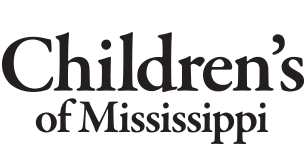I Want To
Contact Us
- For appointments by phone: (601) 984-2700 (Option 1)
- Make an Appointment
Leukemia
- Children's Cancer and Blood Disorders Home
- Bone Cancer
- Bone Marrow Transplant
- Brain and Central Nervous System (CNS) Cancer
- Germ Cell Tumors
- Hepatoblastoma
- Hodgkin's Lymphoma
- Langerhans Cell Histiocytosis
- Leukemia
- Neuroblastoma
- Non-Hodgkin's Lymphoma (NHL)
- Retinoblastoma
- Soft Tissue Cancer
- Wilms Tumor
- Children's Cancer Support Programs
Acute Myeloid Leukemia (AML)
Leukemias occur when your child’s white or red blood cells undergo abnormal changes. The disease starts in the bone marrow, which sends mutated blood cells, or blasts, into your child’s bloodstream.
Normally, your child’s body would make blood stem cells that develop into a myeloid stem cell or a lymphoid stem cell.
Myeloid cells are versatile and can develop into red blood cells which carry oxygen to your child’s body, white blood cells which fight disease and infection, or platelets, which promote clotting.
Lymphoid stem cells develop into types of white blood cells that work primarily to identify and sometimes destroy bacteria, disease and infection. These may develop into three subtypes of cells: NK, natural killer cells that identify and destroy infected cells; B cells that start in your child’s bone marrow and T cells that start in your child’s thymus.
B cells are the precursor of antibody-producing cells (plasma cells) and T cells have many functions from helping activate B cells to directly destroying virus-infected cells. Antibodies tag diseased or infected cells which attracts other white cells to destroy it.
Leukemia may occur when your child’s bone marrow produces immature or mutated cells. Leukemia is called lymphocytic if the change occurs in the marrow cells which form lymphocytes. It is called myelogenous if the change occurs in the marrow cells which form red blood cells, white blood cells and platelets. Most childhood leukemias are acute lymphoid leukemia (ALL).
AML
Acute myeloid leukemia (AML), which includes several subtypes, accounts for far fewer childhood leukemias. Doctors at Children’s Cancer Center treat AML and its many subtypes including acute promyelocytic leukemia (APL), juvenile myelomonocytic leukemia (JMML), chronic myeloid leukemia (CML) and myelodysplastic syndromes (MDS).
Can my child survive leukemia?
The short answer is “yes.” The numbers are on their side. Leukemia is the most common cancer in children accounting for one of three childhood cancers.
Just under one fourth of children diagnosed with leukemia will have AML. Statistically, 50 percent to 70 percent of children survive AML for five years or longer. Some subtypes have even higher survival rates.
Parents should know statistics will not drive the outcome for your child. Each person is different so statistics cannot determine an individual’s outcome. Your child’s doctors will discuss your child’s specific leukemia with you and other health conditions that may affect their outcome.
At Children’s Cancer Center, where research already has led to longer survival, doctors are searching for more and more ways for your child to defeat cancer.
Your child's care team
Hematologists/oncologists are doctors who specialize in treating blood and lymphatic disorders and cancers. At Children’s Cancer Center, they also specialize in working with sick children and their families.
Together, with a large group of other doctors, specialists and support personnel, they work to help your child recover.
Others on this team include pathologists, radiologists, transfusion medicine specialists, psychologists, radiation oncologists, nurse practitioners and nurses with experience in blood and lymphatic disorders, medical technologists, counselors, child life specialists, teachers, dietitians and social workers. Some team members you will see regularly. Others you may never meet.
What we do
Your child’s hematology/oncology care team at Children’s Cancer Center is part of Batson Children’s Hospital and the Cancer Institute, both part of University of Mississippi Medical Center.
This pediatric team specializes in treating cancers which start in your child’s bone marrow and lymphatic system. In fact, this is the only place in the state you can receive some treatments. For example, this hematology/oncology care team operates the only bone marrow and stem cell transplant unit for children in the state. It is also one of only four places in the state to offer aphresis on site, and has a blood bank on site to help treat your child.
Your child’s doctors also can offer your child the opportunity to enroll in clinical trials which test new treatments for many cancers.
Doctors will take into consideration your child’s age, the type of cancer your child has, how advanced it is and other conditions they may have in making recommendations for their treatment.
Most of your child’s doctors also teach the state’s next generation of caregivers and do research on new ways to earlier diagnose blood cancers and to treat them. They have to know the latest ways to detect, diagnose and treat cancers and use that knowledge every day to treat the state’s children.



 UMMC
UMMC